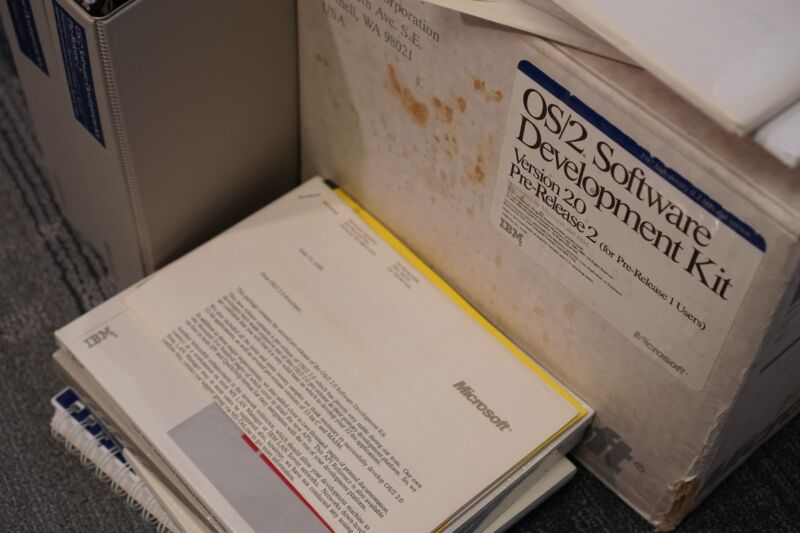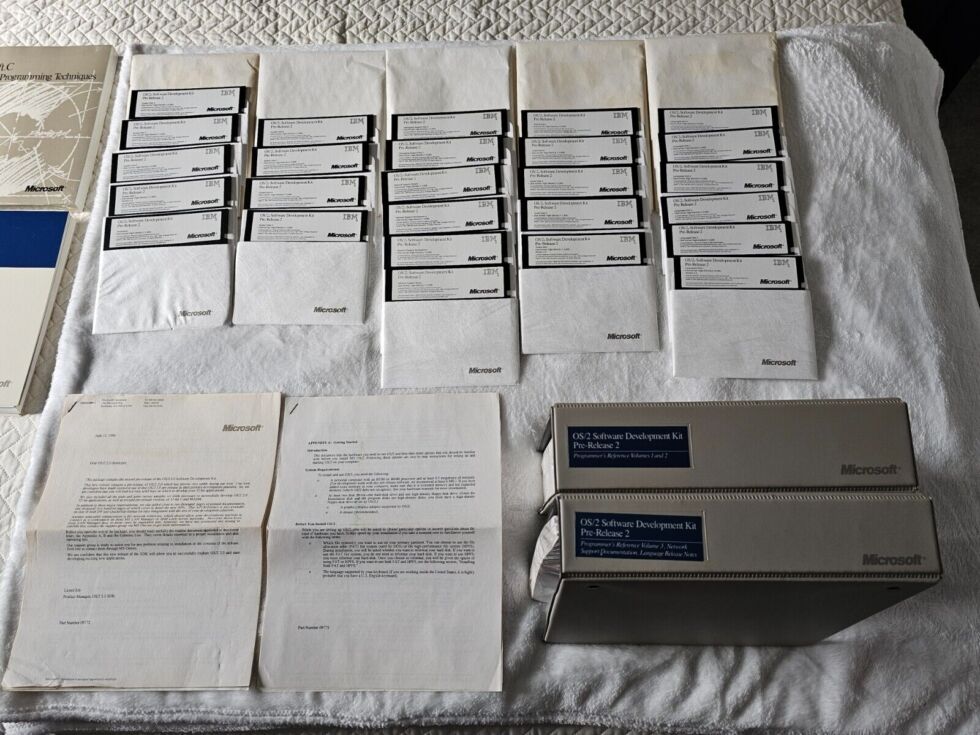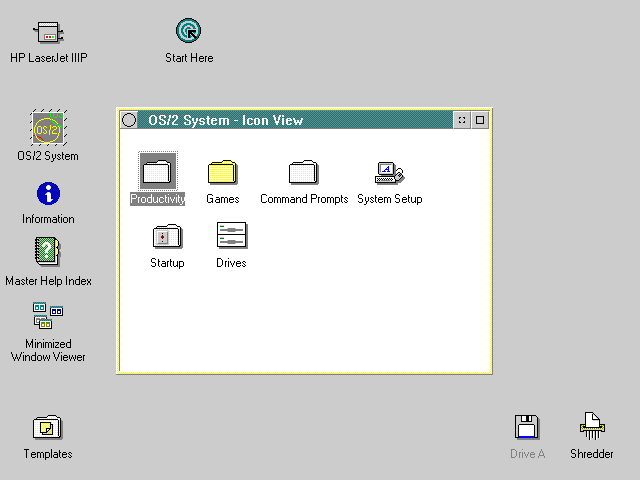
In the annals of PC history, IBM’s OS/2 represents a road not taken. Developed in the waning days of IBM’s partnership with Microsoft—the same partnership that had given us a decade or so of MS-DOS and PC-DOS—OS/2 was meant to improve on areas where DOS was falling short on modern systems. Better memory management, multitasking capabilities, and a usable GUI were all among the features introduced in version 1.x.
But Microsoft was frustrated with some of IBM’s goals and demands, and the company continued to develop an operating system called Windows on its own. Where IBM wanted OS/2 to be used mainly to boost IBM-made PCs and designed it around the limitations of Intel's 80286 CPU, Windows was being created with the booming market for PC-compatible clones in mind. Windows 1.x and 2.x failed to make much of a dent, but 1990’s Windows 3.0 was a hit, and it came preinstalled on many consumer PCs; Microsoft and IBM broke off their partnership shortly afterward, making OS/2 version 1.2 the last one publicly released and sold with Microsoft’s involvement.
But Microsoft had done a lot of work on version 2.0 of OS/2 at the same time as it was developing Windows. It was far enough along that preview screenshots appeared in PC Magazine, and early builds were shipped to developers who could pay for them, but it was never formally released to the public.
But software archaeologist Neozeed recently published a stable internal preview of Microsoft’s OS/2 2.0 to the Internet Archive, along with working virtual machine disk images for VMware and 86Box. The preview, bought by Brian Ledbetter on eBay for $650 plus $15.26 in shipping, dates to July 1990 and would have cost developers who wanted it a whopping $2,600. A lot to pay for a version of an operating system that would never see the light of day!
The Microsoft-developed build of OS/2 2.0 bears only a passing resemblance to the 32-bit version of OS/2 2.0 that IBM finally shipped on its own in April 1992. Neozeed has published a more thorough exploration of Microsoft's version, digging around in its guts and getting some early Windows software running (the ability to run DOS and Windows apps was simultaneously a selling point of OS/2 and a reason for developers not to create OS/2-specific apps, one of the things that helped to doom OS/2 in the end). It's a fascinating detail from a turning point in the history of the PC as we know it today, but as a usable desktop operating system, it leaves something to be desired.

This unreleased Microsoft-developed OS/2 build isn’t the first piece of Microsoft-related software history that has been excavated in the last few months. In January, an Internet Archive user discovered and uploaded an early build of 86-DOS, the software that Microsoft bought and turned into MS-DOS/PC-DOS for the original IBM PC 5150. Funnily enough, these unreleased previews serve as bookends for IBM and Microsoft's often-contentious partnership.
As part of the "divorce settlement" between Microsoft and IBM, IBM would take over the development and maintenance of OS/2 1.x and 2.x while Microsoft continued to work on a more advanced far-future version 3.0 of OS/2. This operating system was never released as OS/2, but it would eventually become Windows NT, Microsoft’s more stable business-centric version of Windows. Windows NT merged with the consumer versions of Windows in the early 2000s with Windows 2000 and Windows XP, and those versions gradually evolved into Windows as we know it today.
It has been 18 years since IBM formally discontinued its last release of OS/2, but as so often happens in computing, the software has found a way to live on. ArcaOS is a semi-modernized, intermittently updated branch of OS/2 updated to run on modern hardware while still supporting the ability to run MS-DOS and 16-bit Windows apps.



3175x175(CURRENT).thumb.jpg.b05acc060982b36f5891ba728e6d953c.jpg)

Recommended Comments
There are no comments to display.
Join the conversation
You can post now and register later. If you have an account, sign in now to post with your account.
Note: Your post will require moderator approval before it will be visible.